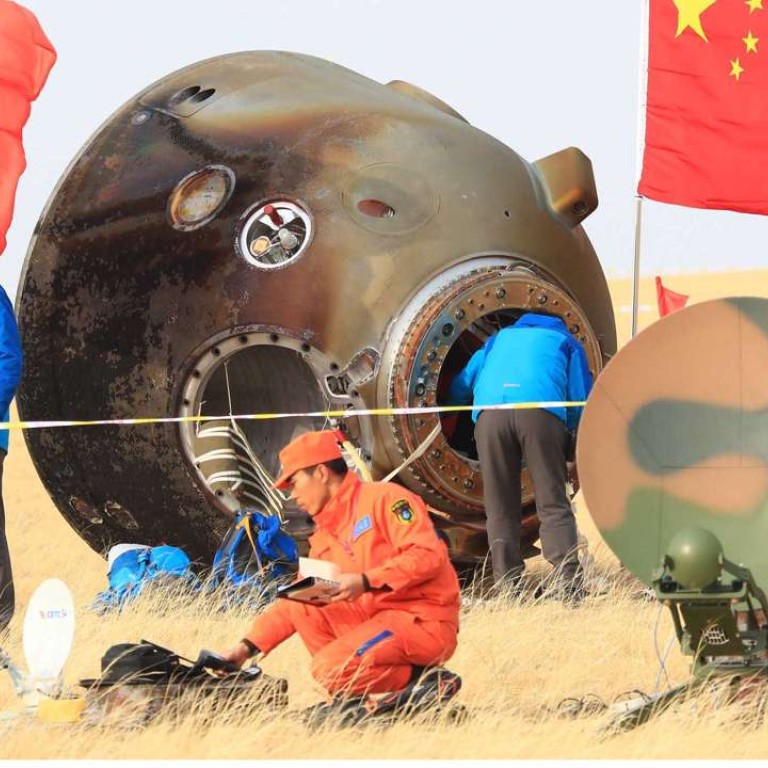
Touchdown for Chinese astronauts after record space mission
Month-long stay in space lab puts China a step closer its space station goal
Two mainland astronauts touched down safely on the grasslands of Ulanqab, in Inner Mongolia, on Friday, ending a month-long mission in China’s bigger quest to establish a permanent space station.
Major General Jing Haipeng and Colonel Chen Dong spent 33 days aloft, setting a new benchmark for Chinese manned space missions.

China’s space station is expected to be up and running by around 2020 and require astronauts to stay aboard for anywhere up to a year, posing challenges for its crew and hardware.

Jing, 50, and Chen, 37, emerged from the re-entry capsule in good health, suggesting plans for the programme were on track, observers said.
It was Jing’s third space mission and Jing’s maiden flight.

Australia-based space analyst Morris Jones said he was not surprised the Chinese astronauts performed well on the mission.
“The astronauts are all ‘right stuff’ material,” Jones said.
But he said he was surprised by China’s progress on hardware. The main challenge, he said, was to ensure the Shenzhou-11 spacecraft was able to function for more than a month in orbit.
“The Shenzhou-11 was ‘powered down’ for most of its mission, when it was docked with the Tiangong-2 [space laboratory]. But everything in orbit is subject to the hazards of space,” Jones said.
“Temperature shifts. Micrometeoroid bombardments. Mechanical wear. Small differences in performance that don’t have major effects with equipment on earth can have major effects on spacecraft.”

A reliable space transport system is essential to a space station programme and the Shenzhou spacecraft would probably need to stay docked with the station for as long as six months.
“[The Shenzhou-11] has shown that it is as resilient as the astronauts who flew aboard it,” Jones said.
One mainland space researcher said the most recent Chinese mission might not seem impressive to the general public overseas, especially in the United States, but it was a step forwards.
“It is an incremental step. But with many incremental steps China may eventually make a big leap forwards and catch others by surprise,” the researchers said.

The mission tested some of the new Chinese hardware that would be used on the space station. The technology included a remotely-operated prototype robotic arm that was designed to move cargo.
The astronauts also released a microsatellite to fly around the Tiangong lab, taking high-definition images on the spacecraft. The satellite can also be programmed to clear up space debris on a collision course with the space lab.
Jing and Chen also passed time in the Tiangong’s confined space making tea and doing tai chi.
Among the various experiments they conducted were studies on breeding silkworms and growing vegetables, knowledge that could help establish a sustainable ecological system in the future space station.

